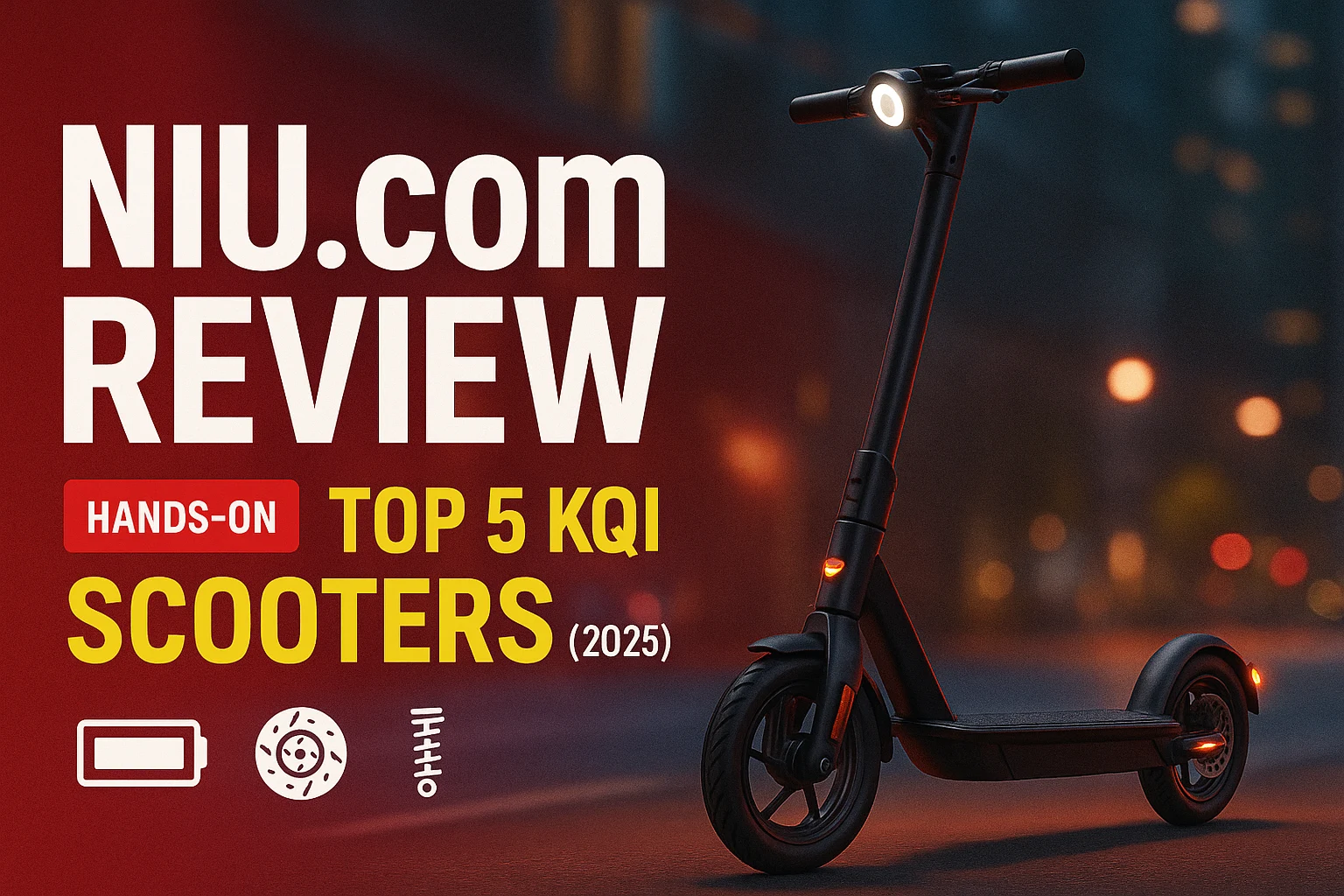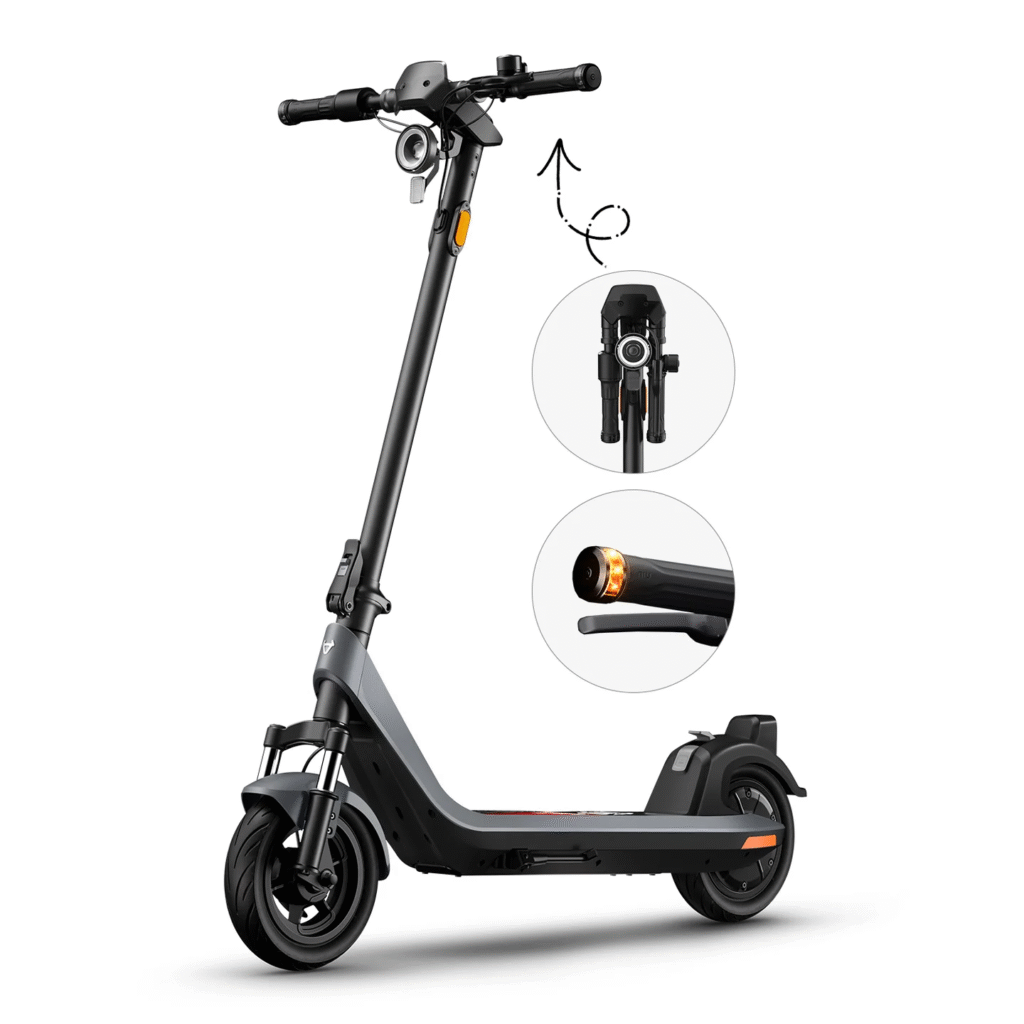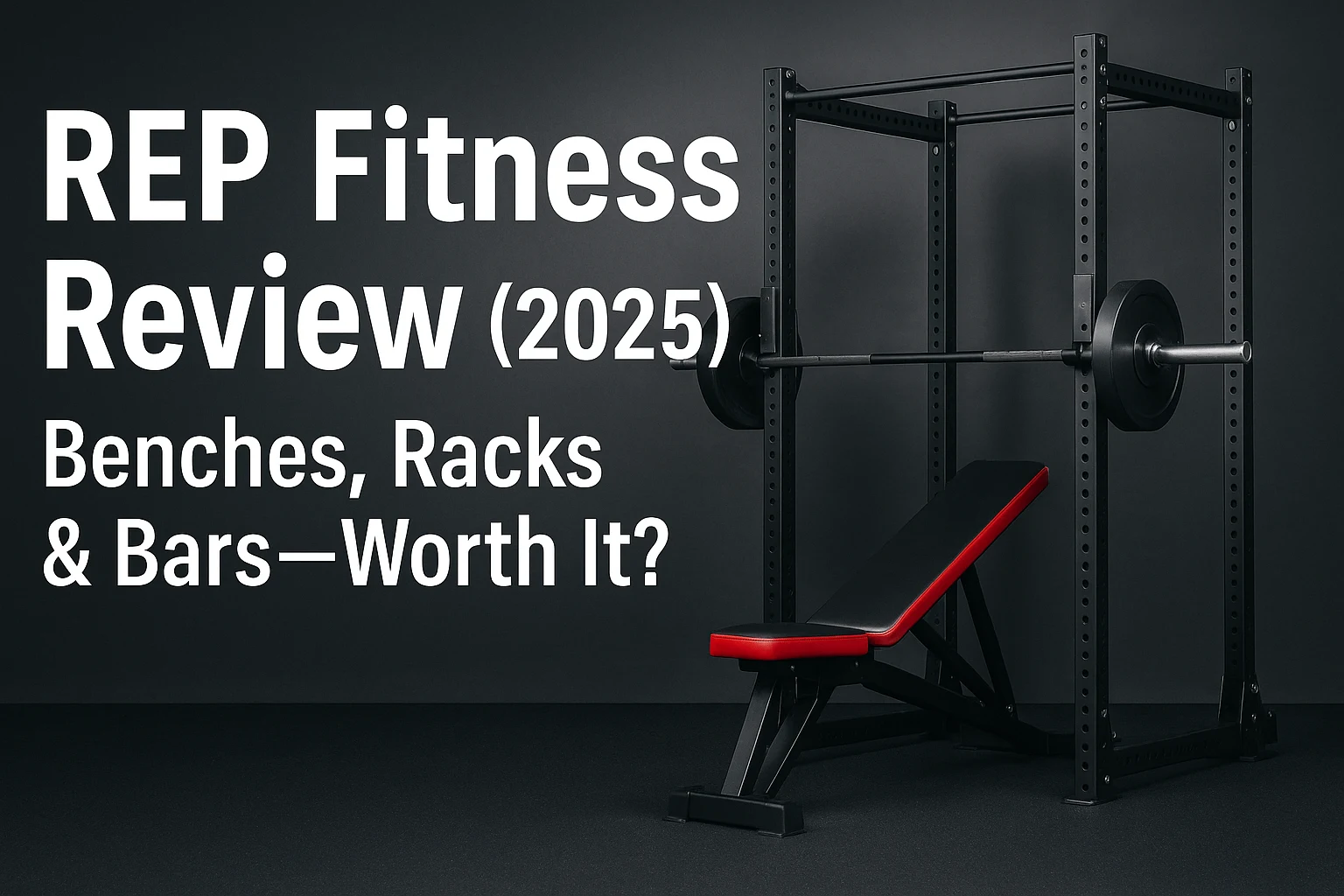NIU.com Review: Are NIU’s Smart Electric Scooters Still the Everyday Commuter’s Best Bet?
If you’ve been eyeing a sleek, app-connected electric kick scooter for daily rides, you’ve likely landed on NIU.com—home to

If you’ve been eyeing a sleek, app-connected electric kick scooter for daily rides, you’ve likely landed on NIU.com—home to NIU’s KQi scooter family and a growing line of urban e-mobility gear. This review breaks down what NIU sells, how the scooters really feel to live with, what to watch for in specs like range, motors, brakes, and IP ratings, and which five NIU models are most compelling right now. Along the way, you’ll get practical care tips (including battery safety) and a checklist to help you buy with confidence. For safety fundamentals around lithium-ion micromobility gear, the U.S. Consumer Product Safety Commission’s Micromobility Information Center is an excellent primer.
Brand Snapshot
What NIU sells. On NIU.com (and its U.S. shop), the brand focuses on electric kick scooters (the KQi line) with options that span lightweight commuters, mid-range all-rounders, and suspended models for rougher streets. NIU also offers select e-bikes and accessories, but the scooters are the star.
Audience & value props. NIU’s KQi scooters are engineered for urban riders who want stable handling, reliable brakes, integrated lighting with turn signals, and smartphone features such as locking, ride stats, and settings. The lineup covers entry-level riders seeking simplicity up through enthusiasts who want dual-tube suspension and higher-capacity batteries.
Shipping, returns & warranty. NIU advertises free shipping to the lower 48 U.S. states, a 30-day return window (change-of-mind allowed, with conditions), and a 2-year limited warranty on its kick scooters—including the battery and motor. Customer support lists a toll-free phone line and email, with self-service support pages for warranty and returns. (Exact terms vary; check NIU’s shipping, return, and warranty policies before purchase.)
THE TOP FIVE (Editor’s Picks from NIU.com)
Exactly five real products available on NIU’s site, with plain-English specs and our take on fit and use case.
NIU KQi Air — Carbon-Fiber Featherweight Commuter

The KQi Air is the featherweight of the adult lineup, designed for riders who carry their scooter on stairs or onto transit. The headline is its carbon-fiber frame that keeps weight around the mid-20-pound mark while maintaining stiffness. The ride experience focuses on comfort for city streets: 9.5-inch tubeless tires, mechanical disc + regenerative braking, plus NIU’s signature Halo headlight, rear lighting, and turn signals that help you stay visible.
On performance, the KQi Air targets up to ~30 miles of range in favorable conditions, a top speed of 20 mph, and max power around 700 W (with a 48V system and ~451 Wh battery). The NIU app (NFC/Bluetooth) handles locking, modes, stats, and over-the-air updates. If your priorities are light carry, quick handling, and premium materials, the Air is the pick.
NIU KQi 300X — Big-City Comfort with All-Terrain Suspension

If you regularly cross rough pavement, patched bike lanes, or expansion joints, the KQi 300X brings comfort hardware the lighter models can’t match. It features dual-tube hydraulic suspension, 10.5-inch tubeless tires, and a roomy deck and bars for relaxed posture and steering stability. The power system aims for ~37.3 miles of range, 20 mph top speed, and 1000 W max power under peak load, with a battery pack sized for longer commutes.
Braking is a strong point: front and rear disc brakes plus regenerative assist. The 300X is heavier than commuter-slim scooters—expect a near-50-pound class weight—but the payoff is ride quality and confidence on choppy streets. It’s the NIU I’d pick for longer, daily urban routes with variable pavement.
NIU KQi 300P — Everyday Workhorse with Real Suspension Value

The KQi 300P hits a sweet spot between comfort, weight, and price. You get all-terrain suspension (dual-tube hydraulic), 10.5-inch tubeless tires, and a battery rated around 486 Wh that targets ~30 miles per charge. Rated power sits in the 450 W range with 900 W peak, and top speed is 20 mph. The handling is composed, the deck is wider than entry-level models, and the ergonomics (twist throttle, broad bars) favor stability.
As a daily commuter, the 300P shines because the suspension works without pushing the price or weight into the most premium tier. If you want real comfort but don’t need the longest range in NIU’s lineup, this is the practical choice.
NIU KQi 200F — Foldable-Handlebar Convenience for Apartment Life

Live in a walk-up or tight apartment? The KQi 200F adds a foldable handlebar to the KQi recipe, shrinking the scooter’s profile for trunks and closets. It pairs front dual-spring suspension with 10-inch tubeless tires and steps up performance versus the KQi 100 series: up to ~33.6 miles of range, 20 mph top speed, and ~700 W max power (48V system with ~365 Wh battery).
Braking uses a front drum + rear regenerative setup for low maintenance, and the NIU app unlocks battery charge limiting (to extend pack lifespan), cruise control, and security features. If you need compact storage but want real-world comfort and range, the 200F is the savvy pick.
NIU KQi 100F — Budget-Friendly Starter with Real-World Comfort

For first-time riders or short-to-medium commutes, the KQi 100F keeps costs—and complexity—down while preserving the essentials. Expect ~18 miles of range, 17.4 mph top speed, and ~243 Wh battery capacity, plus front dual-spring suspension, 9.5-inch pneumatic tires, and front drum + rear regenerative braking. You still get the NIU app, cruise control, and adjustable start/acceleration settings; only the performance and battery are scaled for lighter duty.
If your daily ride is a couple of flat miles with occasional inclines, and you want NIU’s safety features and ride polish at the lowest price point, the 100F is a confident, comfortable entry.
Hands-On Impressions / User Experience
Ride & handling. NIU scooters tend to feel planted versus wobbly or twitchy budget models. The wide handlebars, broad decks, and progressive braking give you braking confidence, even when carrying a backpack. Suspended models (300P/300X/200F) noticeably reduce hand and knee fatigue on cracked pavement.
Controls & app. The twist-throttle is intuitive, and the LED/LCD dash is readable in daylight. App pairing is straightforward; after first setup, Bluetooth/NFC unlocking and ride mode toggles become second nature. App-based charge-limit settings are a real perk for battery longevity if you store the scooter at a mid-state of charge.
Ergonomics & portability. The KQi Air is prime for multi-modal commuters who need to shoulder the scooter, while foldable-handlebar variants (e.g., 200F/100F) are favorites for small apartments. The 300-series’ comfort is superb, but the heft makes frequent carrying less appealing—plan on parking or ground-floor storage.
Care & charging. Give the battery time to cool after riding before charging; avoid charging in hallways or near flammables, and stick to the original charger. For general government-authored guidance, see CPSC’s micromobility battery safety basics.
Features & Specs (Skimmable)
- Batteries & Voltage: 48V systems across the adult KQi family, with capacities ranging from ~243 Wh (KQi 100F) to higher-capacity packs in the 300-series and KQi Air.
- Motors: Rated power commonly 300–450 W with max power up to 700–1000 W depending on model.
- Brakes: Front drum + rear regenerative on entry lines; dual disc + regen on upper lines.
- Tires: 9.5–10.5 in pneumatic, often tubeless on mid/high tiers for puncture resistance and ride comfort.
- Lighting & Signals: Halo headlight, brake light, turn signals, side reflectors for visibility.
- Suspension: None or front dual-spring on entry lines; dual-tube hydraulic on 200F/300-series for real bump absorption.
- Water/Dust Protection: Models list IP codes like IP55/IPX5. For what IP ratings mean, see the International Electrotechnical Commission’s explainer of IEC 60529 ingress protection.
- App Connectivity: Bluetooth (and on some, NFC) for locking, ride modes, stats, OTA updates, and charge limit controls.
Quality, Reliability & Support
Warranty & coverage. NIU publicizes a 2-year limited warranty for kick scooters, covering the main body, battery, charger, frame, motor, controller, and more, with shorter coverage for certain accessories and consumables. The exact warranty matrix and exclusions are worth reading before purchase.
Returns & shipping. A 30-day return policy (with conditions) and free shipping within the contiguous U.S. make home delivery straightforward, but note that return shipping costs may apply for change-of-mind returns. NIU’s Support pages also provide phone and email contacts along with after-sales service links.
Repairability & parts. NIU lists spare parts and chargers in its store, and the scooters use common wear components (tires, tubes, brake pads). For long-term ownership, routine care—keeping tires properly inflated, storing the battery away from extreme heat/cold, and occasionally inspecting bolts/fenders—pays dividends.
Pricing & Value for Money
NIU currently shows adult KQi prices that span budget to premium, with entry options in the high-$300s, mid-range around the $600–$800 mark, and premium scooters around $900–$1,300 depending on model and promotions. Value leans on frame quality, braking hardware, tire size, and suspension—the KQi 300P is a standout where comfort meets price, while the KQi Air earns its tag with meaningful weight savings and premium materials.
Who It’s Best For / Who Should Skip It
Best for:
- Daily urban riders who want a stable, comfortable platform with real lights and signals.
- Apartment dwellers who need folding convenience (100F/200F) or lightweight carry (KQi Air).
- Commuters crossing rough roads or long distances (KQi 300P/300X).
Skip if:
- You need >20 mph top speeds or off-road-only performance—NIU tunes these for urban safety and compliance.
- You can’t store or charge a scooter safely indoors (review local building rules and consider battery-safe storage practices).
- You rarely ride and just want a toy; these are overkill if you’ll roll once a month.
Comparisons (On-Site Alternatives)
- KQi Air vs. KQi Air X: Air X nudges materials and finish to the max; if you love ultra-light and don’t mind spending more, the Air X is the flex pick. The standard Air retains most of the portability benefits at a lower price.
- KQi 300P vs. KQi 300X: The 300X has more range and beefier suspension; the 300P gets you nearly the same comfort for less money and weight.
- KQi 200F vs. KQi 3 Pro (when in stock): 200F adds foldable handlebars and updated ergonomics; KQi 3 Pro rides firmer but remains a proven all-rounder.
Buying Guide: How to Choose Your NIU Scooter
- Commute Distance & Terrain: Match battery capacity and tire size to your route. Rough pavement? Prioritize suspension and tubeless tires.
- Portability vs. Comfort: If you carry your scooter often, weight is king (KQi Air). If you ride longer or rougher routes, pick 300P/300X.
- Brakes & Safety: Urban stop-and-go rewards disc brakes and good regen. Always check lighting and turn signals.
- Weather & IP Rating: Expect splashes, not submersion; learn what IP55/IPX5 actually means via IEC’s IP ratings guide.
- Battery Care: Avoid deep discharges and full storage charges; use app charge limits when possible. For fundamentals, review CPSC’s micromobility safety center.
- Local Rules: Sidewalks? Speed caps? Helmets? U.S. roadway safety resources via FHWA can orient you to broader active-transport considerations: FHWA Pedestrian & Bicyclist Safety.
FAQs
Q1) What’s the warranty on NIU kick scooters?
NIU publishes a 2-year limited warranty on kick scooters (battery and motor included), with shorter terms for some parts. Always read the current warranty page for specifics before buying.
Q2) How fast do they go?
Most adult NIU KQi scooters top out at about 20 mph on-road. Some earlier or region-specific models may list different on-paper speeds; always check your local regulations and the product page.
Q3) What kind of brakes do NIU scooters use?
Entry models typically use a front drum + rear regenerative setup (simple, low maintenance). Upper models add dual disc brakes plus regen for stronger stopping power.
Q4) Do they have suspension?
Many do. The KQi 100F/200F use front dual-spring suspension; KQi 300P/300X step up to dual-tube hydraulic suspension for a more cushioned ride on broken pavement.
Q5) Can I ride in the rain?
Check each model’s IP rating (often IP55 or IPX5). These ratings cover resistance to dust and water spray—not submersion. Learn how IP ratings work from the IEC’s official explainer, and ride conservatively on wet surfaces.
Q6) How long is shipping and what does it cost?
NIU advertises free shipping (contiguous U.S.) and typical processing + shipping of several business days, but timing depends on region and stock. Confirm shipping and return terms at checkout.
Q7) Any battery safety tips?
Use the original charger, charge on a non-flammable surface, keep away from exits/hallways, don’t over-charge, and avoid extreme heat. The CPSC’s micromobility safety hub has excellent battery guidance for e-scooters and e-bikes.
Verdict
NIU continues to offer one of the most coherent scooter lineups for city riders who value braking confidence, real lighting/turn signals, stable geometry, and an app that adds genuine utility. The KQi Air is the pick for anyone who must carry their ride; the 300P is the value comfort king; the 300X is the plush, long-range commuter; the 200F nails compact storage without giving up range; and the 100F brings NIU’s safety DNA to first-time buyers. If your everyday ride is urban, you want 20-mph-class safety tuning, and you care about fit, finish, and support, NIU.com remains an easy recommendation.








